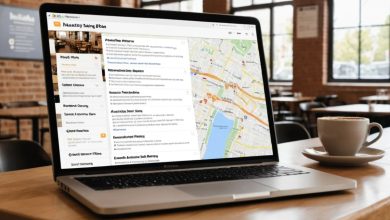How Women-Only Networking Groups Empower Growth
Imagine stepping into a room—physical or virtual—filled exclusively with women who share your professional aspirations and challenges. In these spaces, conversations flow more freely, mentorship feels genuine, and opportunities arise from a collective understanding of gender-specific hurdles. Women-only networking groups harness this dynamic to foster empowerment, accelerate career advancement, and create lasting bonds. In this article, you will learn what defines these groups, their core features, the impact they have on professional growth, and practical steps to join or launch a thriving community.
Understanding Women-Only Networking Groups
What Are Women-Only Networking Groups? (Featured Snippet Optimization)
Women-only networking groups are professional communities exclusively for women, designed to cultivate mentorship, collaboration, and career advancement. These groups often feature peer-to-peer support circles, exclusive workshops, and a safe environment for candid discussions on challenges unique to women, such as gender bias or balancing career with caregiving responsibilities.
Why Women-Only Networking Matters
In many industries, women face obstacles that are less visible in mixed-gender settings. By bringing women together, these groups create:
-
Increased confidence through shared experiences and successes
-
Access to female mentors and role models who understand gender-specific hurdles
-
Amplified visibility for women in male-dominated fields, reducing feelings of isolation
-
Collaborative problem-solving that addresses issues like pay equity, workplace bias, and leadership transitions
-
Enhanced sponsorship opportunities, as women advocate for and promote one another’s achievements
Identifying the Primary Intent: Empowerment and Growth
Readers seeking information on women-only networking groups primarily aim to understand how these communities function, the advantages they offer, and practical guidance on engaging with or creating such groups. While the content differentiates from comparative analyses of mixed-gender networks or transactional details about membership fees, it focuses on empowerment, professional growth, and actionable strategies.
Core Features of Effective Women-Only Networking Groups
Inclusive Membership Criteria and Structure
A successful women-only networking group balances inclusivity with clear objectives:
-
Membership models vary from open registration, where any woman can join, to nomination-based or invitation-only structures that maintain an exclusive atmosphere.
-
Defining eligibility and membership tiers ensures that both early-career professionals and seasoned executives find value. For example, an “associate” tier for recent graduates might offer access to foundational workshops, while an “executive” tier provides leadership coaching and high-level mentorship.
-
A typical structure may feature a steering committee overseeing strategic direction, regional chapters for localized events, and industry-specific cohorts (e.g., women in tech, women in finance) that address particular professional needs.
Tailored Programming and Events
Events serve as the lifeblood of these groups, providing targeted learning and networking opportunities:
-
Common event types include leadership and negotiation workshops, panel discussions with female executives, roundtables on work-life integration, and virtual mastermind sessions for geographically dispersed members.
-
To design a 60-minute workshop on “Negotiating Your First Promotion,” follow this outline:
-
Icebreaker & Introductions (10 minutes): Participants share one negotiation success story and one challenge.
-
Expert Q&A (20 minutes): An experienced negotiator discusses techniques such as anchoring, value articulation, and handling objections.
-
Breakout Role-Play Sessions (20 minutes): Small groups simulate negotiation scenarios—each woman practices asking for a raise or promotion while peers provide feedback.
-
Group Debrief & Action Steps (10 minutes): Reconvene to discuss lessons learned and concrete next steps, such as scheduling a personal negotiation practice or updating a career development plan.
-
Mentorship and Sponsorship Programs
Mentorship and sponsorship lie at the heart of professional advancement within women-only networks:
| Program Type | Mentorship | Sponsorship | Combined Model |
|---|---|---|---|
| Definition | One-on-one guidance and skill-building | Advocates who promote mentees for opportunities | Structured pairings with both support layers |
| Pros | Personalized development, long-term growth | Direct access to career opportunities, visibility | Maximizes both guidance and advocacy |
| Cons | Limited by mentor availability | Sponsors may prioritize high-visibility roles | Requires more organizational coordination |
| Ideal Use Case | Early-career professionals | Mid-career women seeking promotions | High-potential women aiming for leadership roles |
In a mentorship program, an experienced professional offers advice on navigating corporate structures and developing leadership skills. Sponsorship, by contrast, involves a senior leader actively endorsing a woman’s candidacy for high-impact roles or project leadership. A combined model pairs each woman with both a mentor for skill development and a sponsor for career advancement.
Resource Libraries and Knowledge Sharing
Women-only networking groups often curate extensive libraries of career resources:
-
Common materials include articles on navigating workplace bias, templates for performance review preparation, webinars on personal branding and executive presence, and toolkits for launching women-focused initiatives within companies.
-
To organize shared resources, set up a Google Drive folder with the following structure:
-
Career Development: Articles and guides on skill-building, resume advice, and interview preparation.
-
Leadership: Whitepapers on leading teams, strategic decision-making frameworks, and leadership style assessments.
-
Work-Life Integration: Research on flexible work arrangements, mental health tips, and caregiving resources.
-
Industry Insights: Reports on market trends, competitor analyses, and sector-specific best practices.
-
Ensure naming conventions are consistent—e.g., “2025_WorkLife_Guide” and “Negotiation_Tips_Webinar_Q1”—so members can quickly locate relevant files.
Benefits and Impact on Professional Growth
Building Confidence and Leadership Skills
By participating in workshops and peer feedback sessions, women develop both hard and soft skills:
-
Confidence-building activities include public speaking workshops designed for women, peer feedback circles where members present goals and receive constructive critique, and accountability groups that set monthly career targets.
-
In one case study, a mid-level marketing manager participating in a women-led mastermind group increased her promotion rate by 50% over two years by refining her executive presence, practicing negotiation tactics, and receiving sponsor support within the group.
Expanding Professional Network and Opportunities
Women advocating for women often lead to higher referral and collaboration rates:
| Metric | Women-Only Networking | Mixed-Gender Networking |
|---|---|---|
| Peer Referrals | 35% higher rate | Baseline |
| Promotion Advocacy | 60% report active sponsorship | 40% report general support |
| Entrepreneurial Collaborations | 45% form new ventures | 25% form new ventures |
Within women-only networks, members are 35% more likely to refer each other for job opportunities, while sponsorship advocacy results in 60% of participants securing higher-level positions. Real-world examples include co-founding startups: two women met at a finance-focused women’s group, combined their complementary skills, and launched a successful fintech venture within a year.
Addressing Unique Challenges Faced by Women
Women-only groups create a space to tackle issues often glossed over in mixed settings:
-
Common challenges include imposter syndrome and reluctance to self-promote, bias in hiring and promotion decisions, and the need to balance caregiving responsibilities with career aspirations.
-
Facilitating a discussion circle on “Overcoming Imposter Syndrome” might involve guided journaling prompts like “Recall a time when your skills were recognized—what did that feel like?” and peer coaching exercises where participants share strategies for reframing negative self-talk.
By openly addressing these issues, members not only find strategies to overcome them but also build solidarity and resilience.
How to Join or Launch a Women-Only Networking Group
Evaluating Existing Groups and Membership Options
When choosing a group, consider the following criteria:
-
Alignment with Industry or Role: Look for networks tailored to your sector, such as women in tech, women in finance, or women entrepreneurs.
-
Accessibility: Evaluate whether events are local, virtual, or hybrid; consider scheduling and time zone compatibility.
-
Membership Fees and Benefits: Compare the cost against offerings—mentorship programs, exclusive events, and resource libraries.
-
Community Size and Engagement Level: A smaller group may foster intimacy, while a larger network provides broader reach.
Use a worksheet to compare potential groups side by side, with columns for Mission, Events per Month, Cost, Member Reviews, and Key Contacts. This structured assessment ensures you select a community that matches your goals.
Step-by-Step Guide to Launch Your Own Group
Launching a women-only networking group requires clear planning and community-building:
-
Define mission and objectives: For example, “Empower mid-career women in marketing to advance into leadership roles.”
-
Choose a structure: Decide between a non-profit or for-profit model, outline membership tiers (e.g., general member, premium member), and plan regional chapters.
-
Develop a launch plan: Establish timelines for branding (logo, website), social media presence, and the inaugural event.
-
Recruit founding members: Tap into your personal network to invite 10–15 charter members representing diverse industries and career stages.
-
Plan the first event: Select a compelling topic—such as “Building Executive Presence”—secure a speaker, and finalize logistics.
Example Timeline:
-
Month 1: Draft mission statement, incorporate legal entity, design branding assets.
-
Month 2: Launch website and social media channels; initiate membership drive.
-
Month 3: Host inaugural virtual roundtable with 20 charter members to gather feedback and refine programming.
Leveraging Virtual Platforms for Broader Reach
Virtual tools enable women-only groups to connect across regions and time zones:
-
Use Zoom or Microsoft Teams for webinars and panel discussions, ensuring reliable video quality and breakout room capabilities.
-
Set up Slack or Discord workspaces for ongoing conversations, resource sharing, and informal peer support. Create channels like #introductions, #career-advice, #upcoming-events, and #resources.
-
Host annual or biannual summits on platforms like Hopin or Remo, which feature built-in networking tables, expo halls, and chat functions.
Tutorial: Setting Up a Slack Workspace
-
Create channels: #introductions, #career-advice, #upcoming-events, #resources.
-
Onboard new members: Automate a welcome message outlining community guidelines, core channels, and initial resources.
-
Schedule weekly “office hours” where founding members drop in to answer questions or offer mentorship.
By combining synchronous sessions with asynchronous discussions, virtual platforms ensure continuous engagement even when members are spread across continents.
Measuring Success and Ensuring Sustainability
Key Metrics to Track Group Impact
Quantifying your group’s influence helps refine strategies:
-
Membership Growth Rate: Track the number of new members per quarter.
-
Event Attendance: Calculate average turnout percentage relative to total membership.
-
Mentorship Matches: Count the number of mentor-mentee pairs formed annually.
-
Member Satisfaction: Analyze survey results on perceived career impact and community support.
-
Successful Collaborations: Record the number of ventures or projects initiated through group connections.
Tutorial: Creating a Simple Dashboard
-
Use Google Data Studio or a spreadsheet to set up columns—Membership Growth, Event Attendance, Mentorship Pairs, Survey Scores, Collaborations.
-
Update metrics monthly, using charts to visualize trends.
-
Review quarterly to identify high-impact activities and areas needing improvement.
Collecting Feedback and Iterating
Regular feedback loops ensure programming remains relevant:
-
Post-event surveys with 3–5 targeted questions, such as:
-
“How satisfied were you with today’s session?”
-
“What was your biggest takeaway?”
-
“Which topics or speakers would you like next quarter?”
-
“Would you recommend this group to a colleague? Why or why not?”
-
-
Quarterly focus groups that dive deeper into member needs and preferences.
-
An anonymous suggestion box via Google Forms to gather continuous improvement ideas.
By analyzing survey data and focus group insights, leadership can iterate on event formats, topics, and mentorship offerings to maintain high engagement.
Ensuring Long-Term Engagement and Growth
Sustainable communities prioritize member retention and evolution:
-
Offer exclusive member-only resources—templates, toolkits, and e-books—to add ongoing value.
-
Recognize active members through “Member of the Month” spotlights, celebrating their achievements and contributions.
-
Introduce tiered benefits for long-term members: discounts on premium events, invitations to leadership roles within the group, or access to high-profile mentors.
Example Sustainability Plan:
-
Year 1: Build a core community of 100 members, host quarterly flagship events, and establish mentorship pairs.
-
Year 2: Launch regional chapters in three additional cities, introduce a paid premium tier with 1-on-1 coaching.
-
Year 3: Secure sponsorships from aligned brands, and organize an annual women’s leadership conference that attracts 500+ participants.
This phased approach balances growth with member experience, ensuring the group remains focused on its mission while expanding its impact.
Comparing Women-Only vs. Mixed-Gender Networking Groups
Pros and Cons Table
| Feature | Women-Only Groups | Mixed-Gender Groups | Ideal Scenario |
|---|---|---|---|
| Safe Space for Sharing | High—members feel comfortable discussing gender-specific challenges | Moderate—some topics may be harder to broach | When addressing issues like bias, pay equity, or leadership transitions |
| Mentorship and Advocacy | Strong peer-to-peer advocacy; sponsors focus on women’s advancement | Broader perspective but may dilute women’s specific needs | For targeted career support and role-modeling |
| Diversity of Perspectives | Focus on shared gender experiences; can lack cross-gender insights | Greater variety of viewpoints; potential gender balance | When seeking industry-wide trends not tied to gender-specific issues |
| Community Bonding | Deep camaraderie among members due to shared experiences | Wider network but potentially less depth regarding women’s challenges | When deep trust and vulnerability are priorities |
Featured Snippet: Quick Benefits of Joining a Women-Only Networking Group
-
Provides a safe environment to discuss gender-specific career challenges
-
Grants access to female mentors and role models who understand unique obstacles
-
Increases likelihood of getting sponsorship and advocacy from women in leadership
-
Offers tailored programming focused on leadership, negotiation, and work-life integration
Frequently Asked Questions (FAQs)
How Do I Find a Reputable Women-Only Networking Group?
Look for groups with a clear mission, a robust event calendar, and positive testimonials from existing members. Check social media communities, professional associations, and local women’s business organizations. Evaluate factors like membership fees, event frequency, and mentorship opportunities to ensure the group aligns with your goals.
Are Women-Only Networking Groups Only for Corporate Professionals?
Not at all. These groups serve women at various career stages and sectors, including entrepreneurs, freelancers, nonprofit leaders, and creatives. Many groups create sub-communities or cohorts based on industry, career level, or specific interests, ensuring relevance for a broad range of professional backgrounds.
Can Men Participate or Support in Women-Only Networking Initiatives?
While membership is exclusively for women, men can support these initiatives by serving as allies—offering to speak at events, sponsoring programming, or volunteering as mentors in affiliated mixed-gender mentorship initiatives. Allies reinforce the mission without diluting the women-centric safe space.
What Is the Typical Cost to Join a Women-Only Networking Group?
Costs vary widely: some grassroots communities offer free membership with optional paid events, while established organizations charge annual dues ranging from $50 to $500, depending on program scale, mentorship access, and exclusive resources. Weigh membership benefits against your professional goals before deciding.
Conclusion
Women-only networking groups provide a powerful platform for empowerment, skill development, and sustained professional growth. By offering a safe environment to address gender-specific challenges, access to targeted mentorship and sponsorship, and curated programming on leadership and work-life integration, these communities equip women to excel in any field. Whether you’re evaluating existing groups or launching your own, understanding core features, measuring impact, and ensuring sustainability are crucial steps. As you engage with a women-only network, leverage tailored events, resource libraries, and close-knit mentorship circles to amplify your confidence, expand your influence, and navigate your career path with collective support. By harnessing the unique advantages of these groups, you’ll accelerate your trajectory and contribute to a stronger, more inclusive professional landscape.
Published on: 4 de June de 2025








